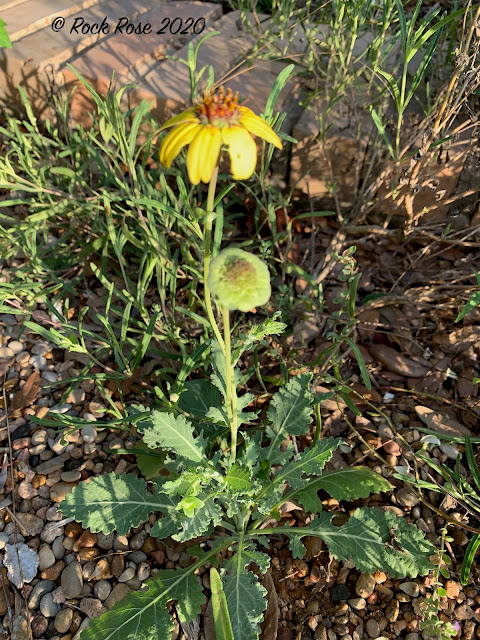It’s no surprise to Texas gardeners that we are in for another week of triple digit temperatures. They will likely be around for quite a while before we start to feel that little breath of cooler air in the mornings. This morning I asked my garden if it can hang in there for a few more weeks. I am always amazed how refreshed the plants can look in the early morning hours. At the end of the day not so much. We really have to give the plants their due as so far we have had 23 triple digit days in August with nothing less than 93º and still they soldier on.
I am slowly removing the spent blanket flowers. When the goldfinches have had their fill I will be hoping they haven’t been too tidy with their eating habits. I’d like some for next year. At the same time I am culling some of the ruby crystal grasses Melinis nerviglumis, and the Mexican mint marigold, Tagetes lucida. The latter makes a lovely small bushy plant which blooms in the fall but it is a prolific re-seeder. I cut it back to the ground in the late winter.
One thing about the sunken garden is it mostly plants itself. Not always in the right places of course and often a little too much of some plants than I need. For instance, zexmenia, Wedelia acapulcensis var. hispida. But as long as I am around to tend to the garden then the visual effect is to my liking. However hard I try the sunken area will not accept nursery grown plants.
I have better success with adding plants to the upper level and this year I have plans to reduce the numbers of plants growing there. More blackfoot daisies, Melampodium leucanthum, like this one. I'm usually a 4" gardener but I chanced to buy a rather healthy 1gallon plant at the grocery store this spring and it took to its surroundings quite happily. It is shaded a little by the fragrant white mistflower, Ageratina havanensis. It is my plan to remove the mistflower in the fall as it is far too big and crowding out some more valuable plants.
Backfoot daisies seed quite well in the English garden gravel but never look quite as healthy as the one above.
I should have given these ones a light trim several weeks ago but sometimes that is a risky thing in this heat.
Tropicals just lap up the heat like these beautiful tree-shaped potted plumerias in the English garden. I am more than happy they are white but would love some of the colored ones. They have now reached the most perfect size but I have concerns about what to do with them this winter. I don't really want to start all over but even without pot, soil and leaves they weigh a ton.
In the right foreground the Philippine violet, Barleria cristata, waits patiently for its time to bloom. The once single plant is now three separate plants and another one has seeded by the edge. Such a wonderful plant that seems to attracts no bugs or diseases. I am happy that there are at least 3 more that have seeded themselves around the garden. This one along the edge of the patio above the sunken garden. Fortunately they die to the ground in the winter or they would be monsters.
But like the Philippine violet I wait patiently for the the temperature to drop so that I can get out and work in the garden.






















































